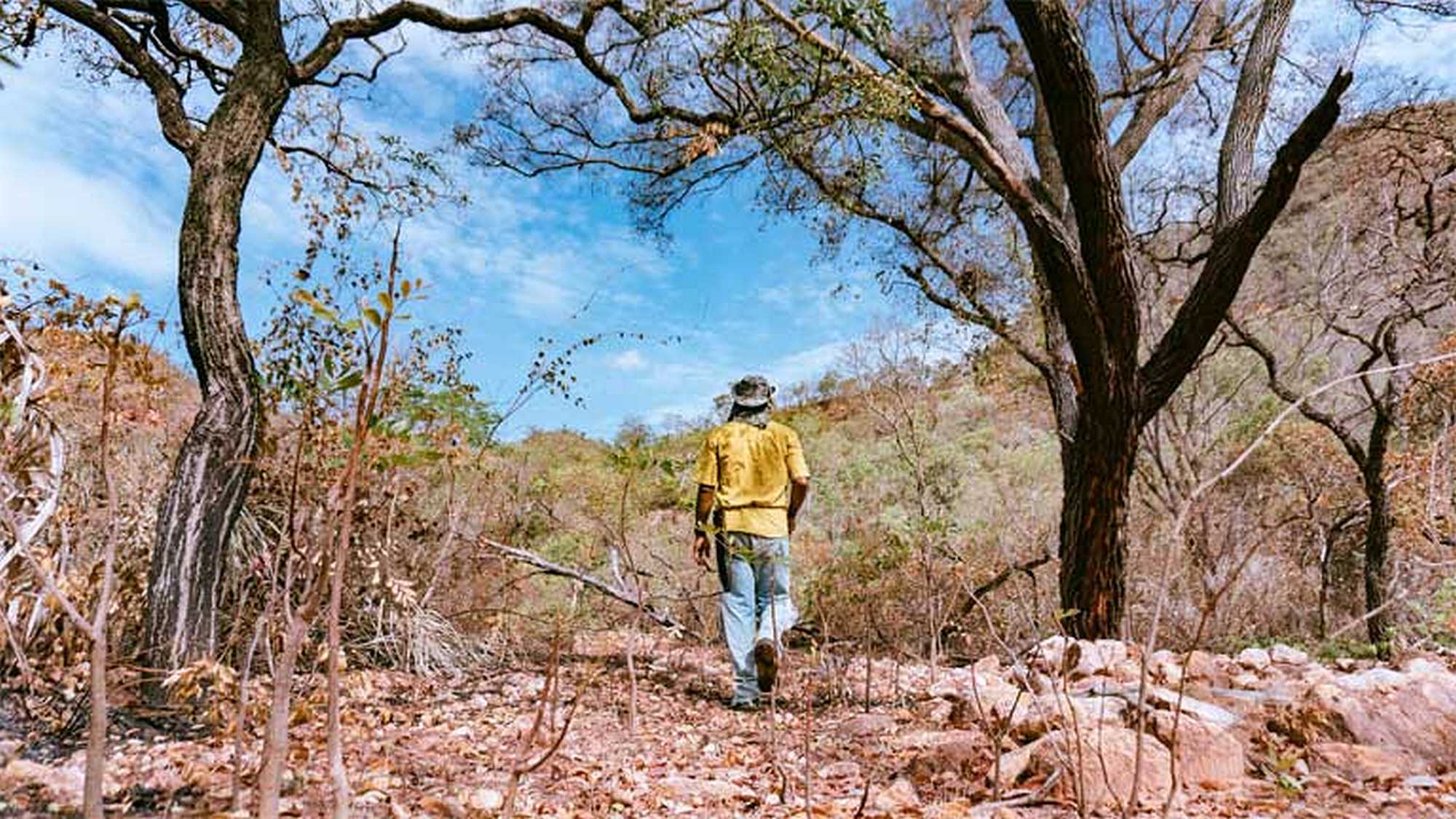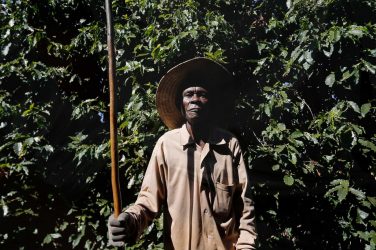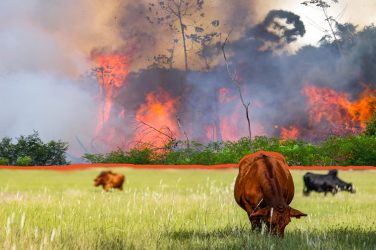On May 6, 2015, the Brazilian government officially recognized a special economic region, one that the country’s agribusiness producers — especially soy growers and ranchers — had earlier dubbed MATOPIBA (a name generated by combining the first two initials of the four states it comprised: Maranhão, Tocantins, Piauí and Bahia).
Both officialdom and elite agricultural producers viewed MATOPIBA as Brazil’s last great undeveloped agricultural frontier and a juggernaut of the nation’s commodities export economy.
However, long before that auspicious date, these four states occupied the northernmost reaches of a politically neglected region: the vast semi-arid grasslands known as the Cerrado — a biome that rivals its Amazon neighbor in extraordinary biodiversity, but which until the 21st century was mostly occupied by Indigenous and traditional peoples.
The 2015 declaration, signed by Dilma Rousseff, Brazil’s president at the time, stated that Decree 8447’s purpose was “to promote and coordinate public policies aimed at sustainable economic development based on agricultural and livestock activities that result in the improvement of the quality of life of the population.”
Not everyone was confident Decree 8447 would promote “sustainable” development. Fearful of an aggressive agribusiness takeover and coinciding environmental harm in MATOPIBA — a process well underway in the Cerrado’s southern half — community representatives in the four states gathered in Araguaína, Tocantins state, in November 2015 for the First Meeting of Peoples and Communities Impacted by MATOPIBA.
Looking into the face of rapid agribusiness expansion, meeting participants agreed to unite in a national political campaign to protect the Cerrado from a development onslaught. Their two primary goals: raise awareness of agribusiness environmental impacts on the Cerrado (home to 5% of the planet’s animal and plant species), and lobby for greater legal protections of the savanna biome.
“Most members of the campaign had been working on the issue for decades,” says Diana Aguiar, political advisor to the National Campaign in Defense of the Cerrado, launched in January 2016. “There had already been a great amount of devastation in the other parts of the Cerrado, and this decree raised a lot of concerns among communities. So, we decided to come together and network instead of working independently.”
Today, more than 50 local, national, and international organizations, along with social movements, are active in the initiative. Campaigners see it as a crucial struggle. But since the organization’s January 2016 founding, the political landscape has shifted and become far more challenging.
With the impeachment of President Rousseff in August 2016, Michel Temer took power and his administration supported environmental deregulation and big budget cuts. Jair Bolsonaro’s government, taking over in January 2019, is overtly anti-environmental and pro-agribusiness, greatly limiting possibilities for Cerrado conservation.
Located in central Brazil, the Cerrado is vast, covering two million square kilometers (770,000 square miles) spread across all, or parts of, 11 states including Paraná, São Paulo, Minas Gerais, Maranhão, Tocantins, Bahia, Piauí, Rondônia, Goiás, Mato Grosso, Mato Grosso do Sul, along with the Federal District (inclusive of Brasília, the nation’s capital).
The Cerrado is the second largest biome on the continent after the Amazon, and its highly varied habitats — grassland, palm swamp, riverine shores, dry forest, scrub and savanna — blanket one quarter of the entire Brazilian landmass, and is equal in size to Spain, France, Germany, Italy and the UK combined.
The Cerrado, which boasts a third of Brazil’s biodiversity, is the largest savanna in South America and of all such biomes, has the richest biodiversity, with 44% of its 10,000 species of plants endemic.
The biome is also considered Brazil’s “cradle of waters,” because eight of Brazil’s 12 major river basins have their headwaters here, including the starts of all the southern tributaries of the Amazon River (except for the Juruá and the Purus), making it a critical freshwater source for the entire continent.
However, researchers say, even as efforts to protect the region’s natural riches got underway, threats have kicked into high gear. “The Cerrado occupies the very heart of the country,” notes Paulo S. Oliveira, professor of ecology at the Universidade Estadual de Campinas in São Paulo.
“It’s the greatest savanna of the Americas. But in the past five decades, it has been devastated mainly due to agricultural and pasture activities.”
According to Oliveira, since the 1970s, intensive agricultural activities — beginning mostly in the south and moving steadily northward — including cattle ranching and plantations of soy, sugarcane, corn, cotton and eucalyptus, have driven rapid, devastating deforestation and soil degradation — changing the savanna landscape and the ecological interactions and integrity of the biome.
Industrial mining, hydroelectric dam construction, and a demand for charcoal by the Brazilian iron and steel industry have also had severe impacts on the environment, bringing increased deforestation across Brazil in recent years, Oliveira says.
Clearly, unchecked agribusiness expansion remains the biggest threat. Terraclass, a Brazilian non-profit that has mapped Cerrado land use and vegetation coverage since 2013, shows that pasture areas now occupy 29.5% of the biome. Four in 10 Brazilian cattle units are based in the Cerrado.
Global demand for soy has also driven an outsized impact, with 51.9% of soy grown in Brazil located in the Cerrado, the equivalent of nearly 16 million hectares (61,776 square miles) of cropland, according to Agrosatélite. Half of Brazil’s soy and sugar cane and 90% of its coffee come from the Cerrado.
But as agribusiness land use soars, protections continue to lag. The campaign notes that, in spite of the biome’s extraordinary socio-environmental importance, Cerrado conservation has been overlooked, especially when compared to the Amazon.
Currently, just 3% of the Cerrado is under strict protection; another 5% is “protected” as mixed-use areas where people live, grow crops, ranch, and are legally required to conserve land — though there’s little compliance or enforcement.
This lack of conservation, the campaigners say, is partly due to agribusiness rhetoric which has portrayed the Cerrado as an “infertile, uninhabited region,” nothing more than “a place between places,” rather than valuable in itself.
Interestingly, this is much the same public relations image painted of the Amazon biome by the Brazilian military government between 1964 and 1985 when cruel socioenvironmental harm was done to Indigenous and traditional communities.
“Agribusiness claims the Cerrado is not fertile and requires development, but that’s simply false,” says Aguiar.
“Defending the Cerrado Is Defending Its People”
Today, 52% of the Cerrado’s territory has suffered deforestation. That removal of native vegetation has led to increasing aridity, threatening the region’s nationally essential aquifers and rivers, as well as its booming agribusiness sector.
Around 9,500 square kilometers of native vegetation was lost in 2015 alone — a deforestation rate double that seen in the Amazon over the same period.
And the threat is accelerating. A recent report by the World Wildlife Fund for Nature (WWF) found that deforestation in the Cerrado rose by 13% during 2020 alone; the report identified the losses in the region as one of nine fronts in the world where deforestation rates are fastest.
Campaigners say pressure on Cerrado Indigenous people and lands has been growing fast too, with land speculation, land grabbing and corruption causing many conflicts. But yet, these long time savanna inhabitants are vital as land stewards, with their presence in the Cerrado sometimes dating back 12,000 years.
Indigenous communities typically live in harmony with the Cerrado environment, and their deep knowledge of local nature and the land often make them the best guardians, giving them a key role to play in the conservation cause.
“People often look at nature as separate from society,” says Aguiar. “But this is a myth. It’s not about taking Indigenous people out of nature. Defending the Cerrado is defending its people.”
Despite difficult odds, the National Campaign in Defense of the Cerrado has achieved some successes. Following the campaign’s initial talks, held between 20 representatives, an opening ceremony took place in the historic city of Goiás in August 2016, under the slogan “Cerrado, Cradle of the Waters: Without Cerrado, Without Water, Without Life.”
In September 2016, traditional communities and other organizations met at the headquarters of the National Conference of Bishops of Brazil in Brasília. In November, a national seminar on MATOPIBA drew researchers from across Brazil, Mozambique and Japan.
Pressure by the campaigners led to a public hearing in the Brazilian House of Deputies in April 2017 to debate classifying the Cerrado as a National Heritage site in Brazil’s constitution, a status that can lead to greater conservation of the ecosystem, but a goal yet to be achieved.
By 2019, a petition filed in the Brazilian Congress supporting the proposal gained more than half a million signatures, stating: “The Cerrado is life, it is a source of wisdom and wealth, it is our heritage.”
“A lot of people did not know about the Cerrado before [these efforts], and it has shifted completely,” says Aguiar. “Both in Brazil and across the world, there is beginning to be a recognition of what a special and important place this is for the planet.”
Edegar de Oliveira Rosa, conservation and ecosystem restoration director at WWF-Brazil, which has been working directly with 39 communities in the state of Goiás to guard against deforestation with drones, agrees.
Cerrado preservation is “coming higher on the agenda,” he says. “We have made some gains because of the global concern.” The Mongabay site is indicative of that growing international awareness, with many dozens of Cerrado conservation stories published over recent years.
In September 2017, in Balsas, the agribusiness capital of Maranhão, the first National Meeting of the Cerrado Peoples was held, bringing together about 600 representatives of traditional peoples from ten Cerrado states.
Five thousand pro-Cerrado protesters filled the streets, as the campaign presented an open letter demanding: “We give priority to indigenous people, blacks, women and young people … who, even if threatened and violated, offer us, with their way of life and struggle, alternatives of Good Living and taking care of he Common House.”
Emmanuel Ponte, ActionAid Brazil’s campaigner and a member of the executive committee of the Cerrado Campaign, believes this community-first organizing principle has been vital to the effort.
“I think the biggest achievement of the campaign so far is the deepening of the exchange between people in order to achieve social environmental justice,” Ponte says.
“It’s a very wide network that brings together a great range of organizations. It goes beyond a narrow environmental perspective. It brings together diversity and inclusion of communities.”
By January 2018, the campaign helped uncover that investments by pension fund manager TIAA, Harvard University’s endowment fund, and loans given by the World Bank had allegedly led to Cerrado land grabbing. In December 2020, Brazil’s land agency and a state court ruled that those land deals were illegal.
“What’s at Stake Is the Life of Every Being”
Despite these significant steps in public awareness, campaigners and researchers alike admit there remains a long way to go in conserving a significant portion of the Cerrado.
“The picture is sad,” says Professor Oliveira. “Especially since Bolsonaro took power, the whole picture of conservation has been severely damaged. Most of the media has documented the burning of Amazon rainforest, but not the burning of Pantanal.”
Brazilian legislation does not guarantee significant protection to the savanna — only about 11% of its area is made up of federal and state natural reserves or conservation areas. By comparison, around 50% of the Amazon rainforest is under protection.
Vital portions of the Amazon, Pantanal and Atlantic Forest have all been designated UNESCO World Heritage sites; while the Cerrado has had only two areas so designated; campaigners say more are needed.
Both 2019 and 2020 were marked by the dismantling of Brazilian environmental institutions under Bolsonaro, criminal fires and increased deforestation rates in the Amazon, Pantanal, and Cerrado.
“In Brazil, the political moment is very challenging,” Ponte agrees. “While the Amazon is the world’s lungs, Cerrado is the heart — the rivers that run through it like blood. What’s at stake is the life of every being.”
In the years ahead, many see this spreading recognition of human and natural interdependence and joint responsibility for the environment as key in the future of the Cerrado campaign.
“Increasingly, we have seen companies start to make commitments to not deforest the Cerrado,” says de Oliveira Rosa, pointing to recent pledges made by the salmon industry, though the soy industry and transnational commodities companies like Cargill remain largely resistant.
Toby Pennington, professor of Tropical Plant Diversity and Biogeography at the University of Exeter, who has been carrying out research in the Cerrado since 1991, agrees. “Legislation is still needed,” he says. “But I feel optimistic now because pressure on supply chains has been driven by consumers” around the world.
Mateus Cardoso, a Brazilian PhD student at Exeter University carrying out research into strategies to restore degraded Cerrado lands, believes new conservation efforts could also spark new hope.
“Active conservation is so important,” he says. “Relying on protected areas is not enough. The degraded lands are so degraded in the Cerrado. This kind of [native] vegetation can’t recover on its own. My research should be able to guide landowners on how to best restore the Cerrado.”
Cardoso’s research will focus on identifying the most resilient plant species under various potential future climatic scenarios, with the intention of providing the results on an easily-accessible app for landowners.
Meanwhile, as the National Campaign to Defend the Cerrado faces unprecedented political challenges, scientific discoveries about this unique biome continue being made — underlining the importance of those efforts.
“We know a lot less than we should about the Cerrado,” concludes Professor Pennington. “It shocks lots of people because we’re well into the 21st century. The Cerrado, for example, has more plant species recorded than in the Amazon. People call it the Garden of Eden, but it’s much more than that.” Campaigners agree: it needs to be conserved now, before more is lost.
Peter Yeung is a freelance journalist that has reported from across Europe, Africa, Asia and Latin America for publications including The Guardian, National Geographic, The BBC and NPR.
This article appeared originally in Mongabay. Read the original article here:
https://news.mongabay.com/2021/02/whats-at-stake-is-the-life-of-every-being-saving-the-brazilian-cerrado/












